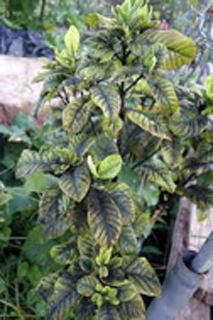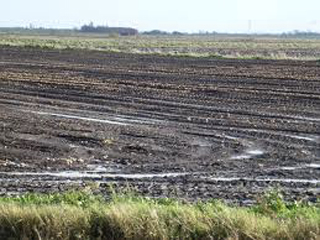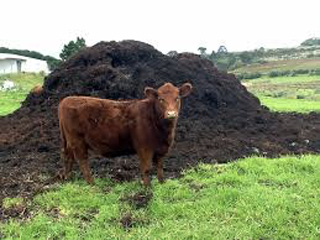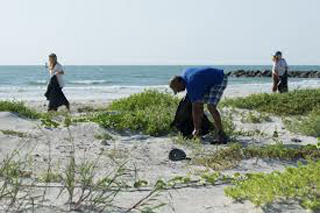 After a dryish September, Mother Nature has certainly turned the taps on us in recent weeks. Never have I seen such a succession of miserable and damp faces, and that includes my own. It is not conducive to doing much gardening, but at least we can plan and be ready for those drier days which do come around. Luckily, it has not been particularly cold, and that in itself is a bit of encouragement.
After a dryish September, Mother Nature has certainly turned the taps on us in recent weeks. Never have I seen such a succession of miserable and damp faces, and that includes my own. It is not conducive to doing much gardening, but at least we can plan and be ready for those drier days which do come around. Luckily, it has not been particularly cold, and that in itself is a bit of encouragement.
So, while we watch the raindrops coursing down the windows, what should we be thinking about doing at this time of year?
Possibly the most important thing you will do for the health of your garden each and every year is to mulch. We ask a lot of our soil, and it is a temptation to think that well-established plants don’t need any more help from us. Not true. Whether you have shrubs, trees, or beds where you grow annual or perennial plants (and that includes vegetables), your soil is constantly being drawn upon for nutrients and minerals. We have to put something back for the cycle of healthy growth to continue, and for your plants to have healthy leaves, and fruit and flower well. It would be like asking you to run a marathon on the ever decreasing contents of a packet of crackers – you will just run out of energy.
This time of year is ideal for mulching because over the autumn, winter and early spring, our soil-dwelling creatures such as worms and grubs will take the nutrients of the mulch down for us, saving us the arduous task of digging it in.
Mulch has the added benefit for some plants of providing a defensive layer against hard ground frost and snow. For example, I leave my dahlias and chrysanthemums in their raised beds and simply put a thick (minimum 2”) layer of drier mulch over where the plants are overwintering, which will keep the worst of the wet and cold out. This has the added advantage of feeding the hungry plants over the winter.
The other great advantage of mulch is that, if you are using mulch from a well-controlled source, it will keep weeds down throughout the following year.
 There is of course a caveat. If your soil is horribly waterlogged at the moment, do not be tempted to apply a mulch just yet. You will simply be locking in the extreme wet and probably causing some rot below the surface. You could end up waving goodbye to some of your herbaceous perennials or shrubs which prefer drier feet (salvias, chrysanthemums, rosemary, sage etc – and the more mediterranean or southern hemisphere plants). Wait until the soil no longer feels saturated and then go for it.
There is of course a caveat. If your soil is horribly waterlogged at the moment, do not be tempted to apply a mulch just yet. You will simply be locking in the extreme wet and probably causing some rot below the surface. You could end up waving goodbye to some of your herbaceous perennials or shrubs which prefer drier feet (salvias, chrysanthemums, rosemary, sage etc – and the more mediterranean or southern hemisphere plants). Wait until the soil no longer feels saturated and then go for it.
So, what to use as your mulch? My favourites are good old well-rotted horse and cow manure. The old adage of where there’s muck, there’s brass, has never been truer when it comes to mulch. You can often obtain it very cheaply if you have a friendly local farmer, or can pick up bags for a £1 or so from the side of road outside obliging farms and stables. Be sure though that it is well-rotted. If it is too fresh, it may burn your plants with the heat it generates as it continues to decompose quickly. If fresh is all you can find, add it to your composter for 3-6 months and that should do it.
 Homemade compost is another favourite, though if you have a bigger garden, it is hard to generate enough in a year to cover the whole garden. We don’t all have the space for industrial sized compost area that Monty Don has…..Still, this is free black gold, provided you have been rigorous about keeping out annual weed seed and nasty perennial weed plants such as bind weed and creeping buttercup until they are well and truly dead, and probably the most economical way to mulch.
Homemade compost is another favourite, though if you have a bigger garden, it is hard to generate enough in a year to cover the whole garden. We don’t all have the space for industrial sized compost area that Monty Don has…..Still, this is free black gold, provided you have been rigorous about keeping out annual weed seed and nasty perennial weed plants such as bind weed and creeping buttercup until they are well and truly dead, and probably the most economical way to mulch.
Bark and wood chip are often used too, but are effective more so as a weed suppressant than as a feed. This is because these will take a long time to break down, and don’t really contain the nutrients to feed your soil well.
Seaweed is in abundance on our coastline too, especially after some evil windy storms. Indeed, our ancestors used to collect it by the cartload to put on such distinguished gardens as Heligan. You can chop it up with a mower and top your beds with it for a mulch, or add it into your composter to rot down into next year’s compost. Whichever way though, absolutely do not cut seaweed that is still living and attached. Only take that which has broken away and is lying dying on the beach.
Many choose to use shop bought manure or compost, which is fine if you don’t have access to anything else, but it can work out very expensive, and fills your dustbin with those irritating plastic bags.
 If you get into the habit of mulching well each year, the natural next step for you is to consider the merits of the No Dig gardening approach. I and a friend Mel are just kicking off a new venture, and we are planting for cut flowers, potted bulbs and vegetables for local (Veryan and surrounds) sale on a much larger scale than either of us has before. As, to put it diplomatically, we are women “of a certain age”, we want to keep our workload sensible and not create a burden for our ageing selves.
If you get into the habit of mulching well each year, the natural next step for you is to consider the merits of the No Dig gardening approach. I and a friend Mel are just kicking off a new venture, and we are planting for cut flowers, potted bulbs and vegetables for local (Veryan and surrounds) sale on a much larger scale than either of us has before. As, to put it diplomatically, we are women “of a certain age”, we want to keep our workload sensible and not create a burden for our ageing selves.
We are both great fans of Charles Dowding’s No Dig approach to gardening and will be implementing this on our plot. Many studies show the benefits to the soil quality of minimising disturbance, and of adding nutrients in a balanced and pesticide/herbicide free way. And let’s face it, Mother Nature managed pretty well on her own before we came along, and continues to manage in those areas where we don’t interfere. Take a look at Charles’ books and articles and see if it doesn’t appeal to you too. It is simple and intuitive, and makes gardening easier in the long run.
There you are. I got through a whole December article without mentioning the C word. Whatever your beliefs, I wish you a peaceful, happy and healthy season with love and fulfilment however you choose to spend it. But I especially raise a glass to all us gardeners – because we’re good.
Helen Robins
Calendra Collective
